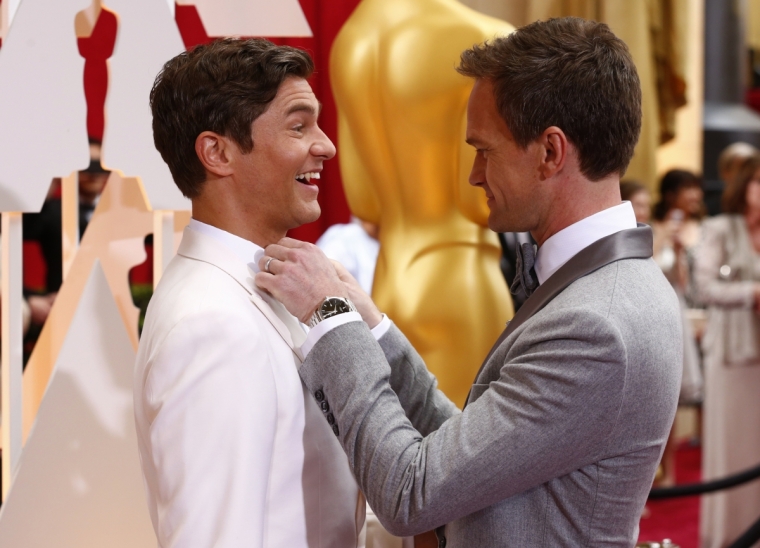Americans greatly overestimate gay population

PRINCETON, N.J. (Christian Examiner) -- Americans vastly overestimate the number of homosexuals living among them, according to a new poll from Gallup.
In the poll, Americans claim that 23 percent of the U.S. population to be either gay or lesbian, much higher than the 3.8 percent Gallup says self-identify as homosexual, transgender or bi-sexual.
The numbers, according to Gallup, are similar to past surveys that estimated similarly high numbers of homosexual Americans in 2002 and 2011.
TV hasn't merely reflected the changes in social attitudes; it has also had an important role in bringing them about. Time and again, it's been shown that personally knowing an LGBT person is one of the most influential factors in shifting one's views on LGBT issues, but in the absence of that, many viewers have first gotten to know us as television characters.
But even the recent figure of 3.8 percent may be too high, according to a working paper at the Centers for Disease Control which alleges reporting errors from the most recent U.S. Census when compared to the 2013 American Housing Survey (AHS) and Social Security Administration (SSA) data.
According to the CDC report, researchers claim "a substantial proportion of couples reported as same-sex in the ACS or 2010 Census appeared to be opposite-sex in the SSA data. This discrepancy was more problematic for same-sex married couples than for their unmarried counterparts. A full 57.3 percent of couples reported as same-sex married in the ACS and 72.5 percent of these couples in the 2010 Census appeared to be opposite-sex in SSA data, compared with 7.0 percent of same-sex unmarried couples in both the ACS and 2010 Census."
"Inconsistencies for reported opposite-sex couples were also found, but were much less common. In both the ACS and decennial Census, less than 1 percent of reported opposite-sex married couples appeared to be same-sex in the SSA data. This was true of 1.6 percent of opposite-sex unmarried couples in the ACS and 0.8 percent of these couples in the 2010 Census."
That misreported data, when compared with the Gallup poll, discloses a significantly smaller share of gays and lesbians in American society than most Americans realize. It is also confirmed by another CDC report, the National Health Interview Survey (NHIS) of 2013, published in the following year.
According to the NHIS, fewer than 3 percent of American are among the LGBT community, though only 1.6 of survey respondents voluntarily self-identified as gay or lesbian.
The reasons why Americans overestimate the number of homosexuals in U.S. society is harder to determine. However, Gallup found estimates of the LGBT population were higher among those with lower educational attainment.
The Gallup poll found that those who had attained only a high school diploma or did not complete high school believed the LGBTs were 28 percent of the American population. Those with some college estimated the figure to be 25 percent. Those who were college graduates fixed the number at 17 percent, while those with postgraduate study or degrees thought it was 15 percent.
Women also thought the number of LGBTs in society was higher (27 percent) than men (19 percent).
"Some of the overestimation may reflect Americans' lack of knowledge about social statistics and demography, which is supported by Americans' historical tendency to overestimate the prevalence of other subgroups in the U.S. population," a statement from Gallup said.
"The overestimation may also reflect prominent media portrayals of gay characters on television and in movies, even as far back as 2002, and perhaps the high visibility of activists who have pushed gay causes, particularly legalizing same-sex marriage," the Gallup statement continued. "Still, the estimates of gay and lesbian percentages have been relatively stable compared with those measured in 2011 and 2002, even though attitudes about gays and lesbians have changed dramatically over that time."
Television's role in promoting gay causes is regularly monitored by the gay rights groups. GLAAD, one such group, reported in its annual survey of television characters that 3.9 percent of television characters in 2014-15 were LGBT -- 32 characters on the television networks ABC, NBC, CBS and FOX.
Among cable networks,the percentage was higher -- there were 64 regular LGBT characters, up sharply from the previous season.
In 2013, GLAAD's report on the number of gay television characters came with the finding that "TV hasn't merely reflected the changes in social attitudes; it has also had an important role in bringing them about. Time and again, it's been shown that personally knowing an LGBT person is one of the most influential factors in shifting one's views on LGBT issues, but in the absence of that, many viewers have first gotten to know us as television characters."